“I am going back,” was the first thought I had as I boarded my flight out of Hanoi. Vietnam went from being a postcard on my vision board to reality in less than 4 months. I had decided that I would take a trip there in January of this year and in April I was standing in the streets of Hanoi as scooters slithered around me.
Da Nang was the first stop. Situated in central Vietnam along the coastline, my childhood friend and I were expecting to embrace our beach-bum personalities. But when we got there, the weather was rotten—steel grey skies with mist forming on top of the hilly Da Nang skyline. Most of all, we didn’t have clothes for it. Our intsy-wintsy non-India friendly shorts had made the 9 hour journey to Da Nang but they could not be put to use. We needed to shop.
The first day, we wore the only pants we had and ventured into the city. Our hotel was situated on the Son Tra peninsula—a heavily touristy part of the city. Across the Dragon Bridge was Da Nang city and my favouritest place the Da Nang Museum of Cham Sculpture.
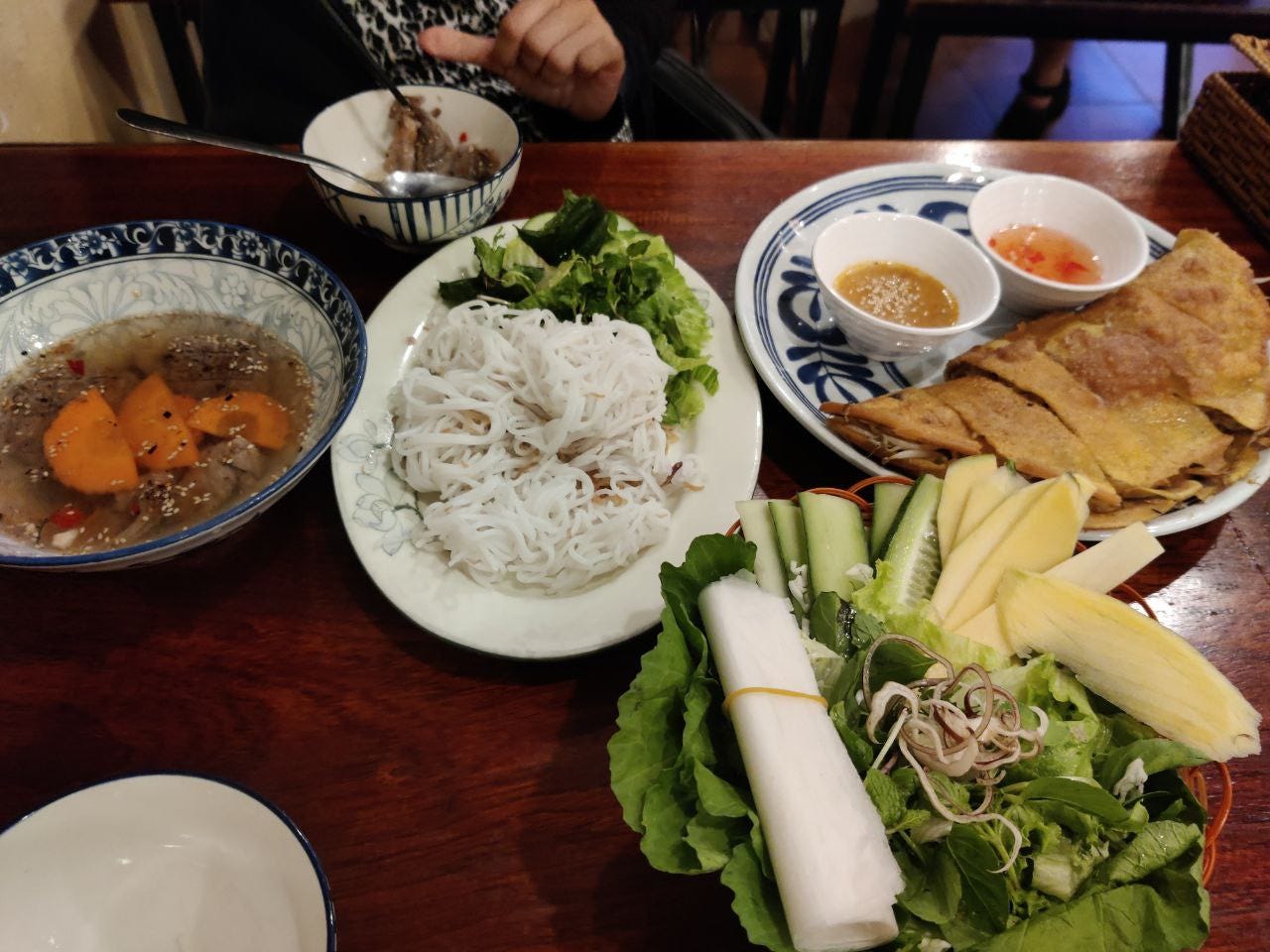
It was a post by Sam Dalrymple that convinced me that I had to travel to Vietnam. In it he spoke of a king from the Champa Kingdom, a Hindu kingdom that reigned in Vietnam. The museum is an old French-style building that houses the most beautiful relics from the Champa temples. The piece de resistance is the Trà Kiệu pedestal—a huge structure of the linga-yoni which at its base displays brilliant sculptures of dancers or apsaras. Their curvaceous tribhangis and strong wide plie stances made me think of home. I will phrase this better when I am more objective but it’s fascinating to see how aesthetics and body language has travelled. There were meditative sculptures of the Goddess Lakshmi whose ears resembled the style seen in Buddhist sculptures. There was Krishna in a wide legged, masculine stance—in stark contrast to the s-curve we are used to seeing him hold. The most intricate though were the carvings of Garuda or the mythological bird.
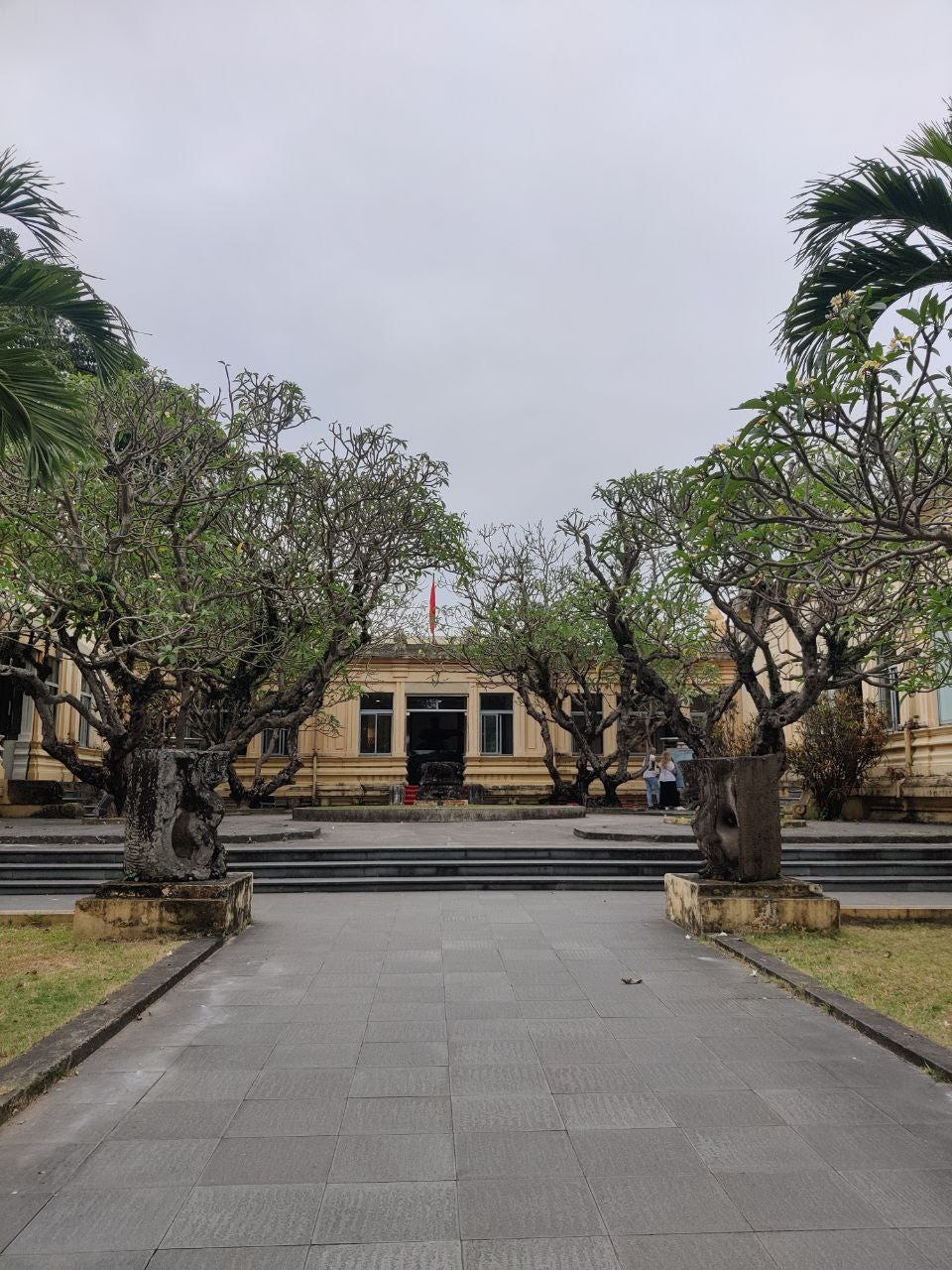
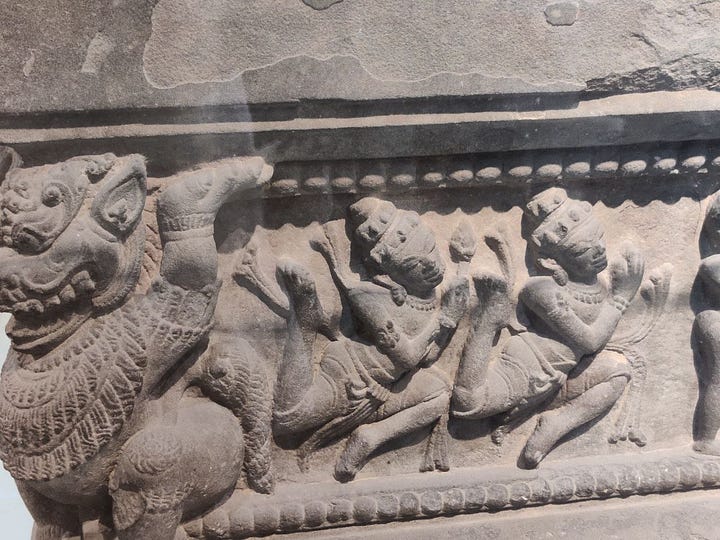
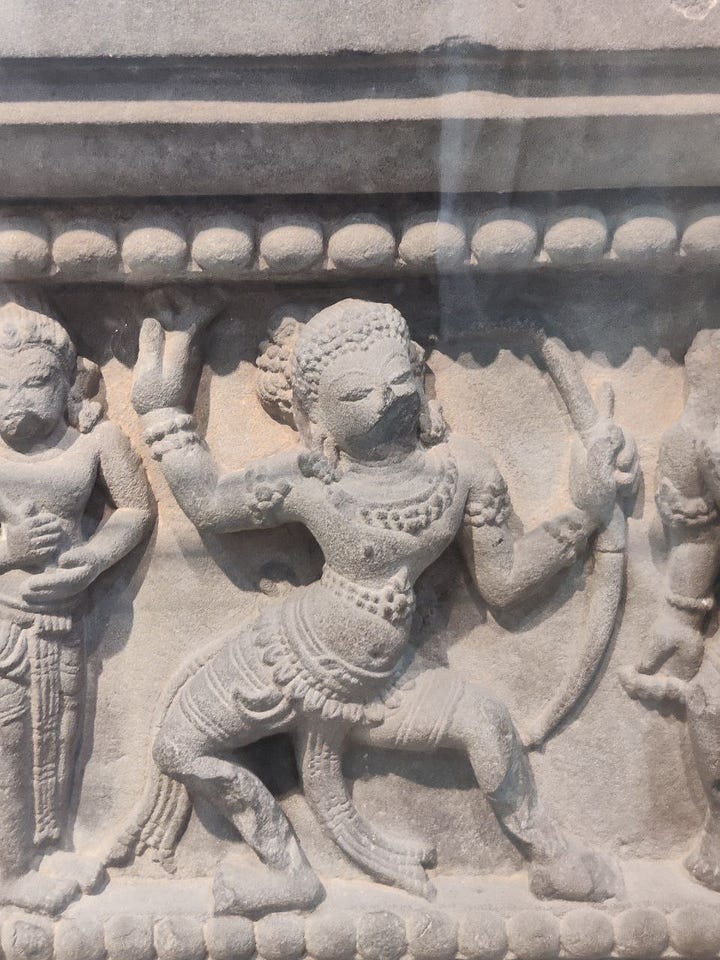

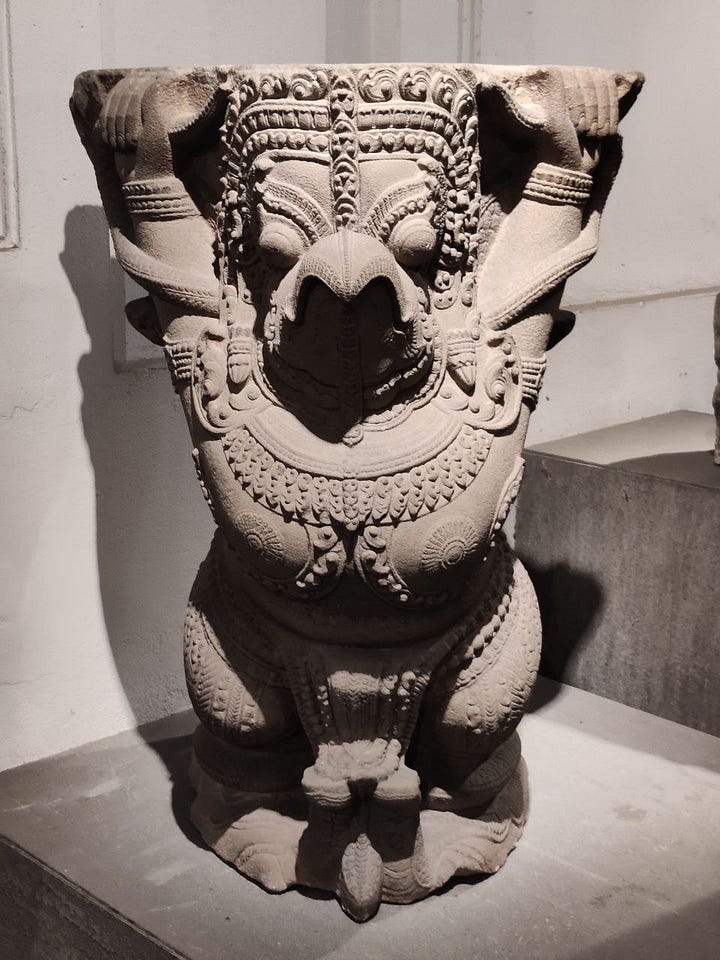
The French influence in Vietnam meant that their bread is absolutely popping. We hopped over to a small bakery for some bread and coffee after we which we did the lord’s work; we shopped. At the end of the way our wallets were lighter and our luggage was heavier. We were better for it.
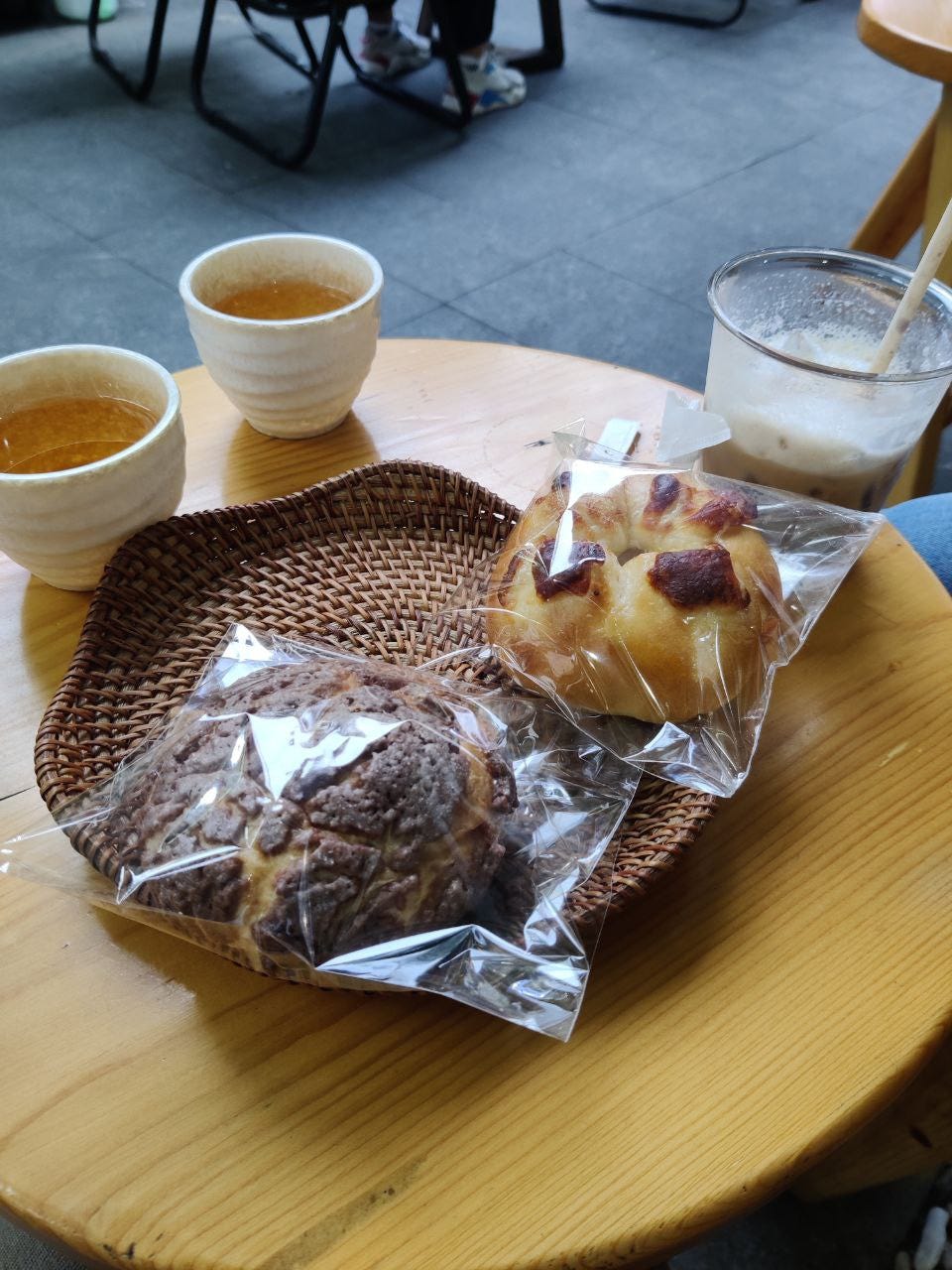
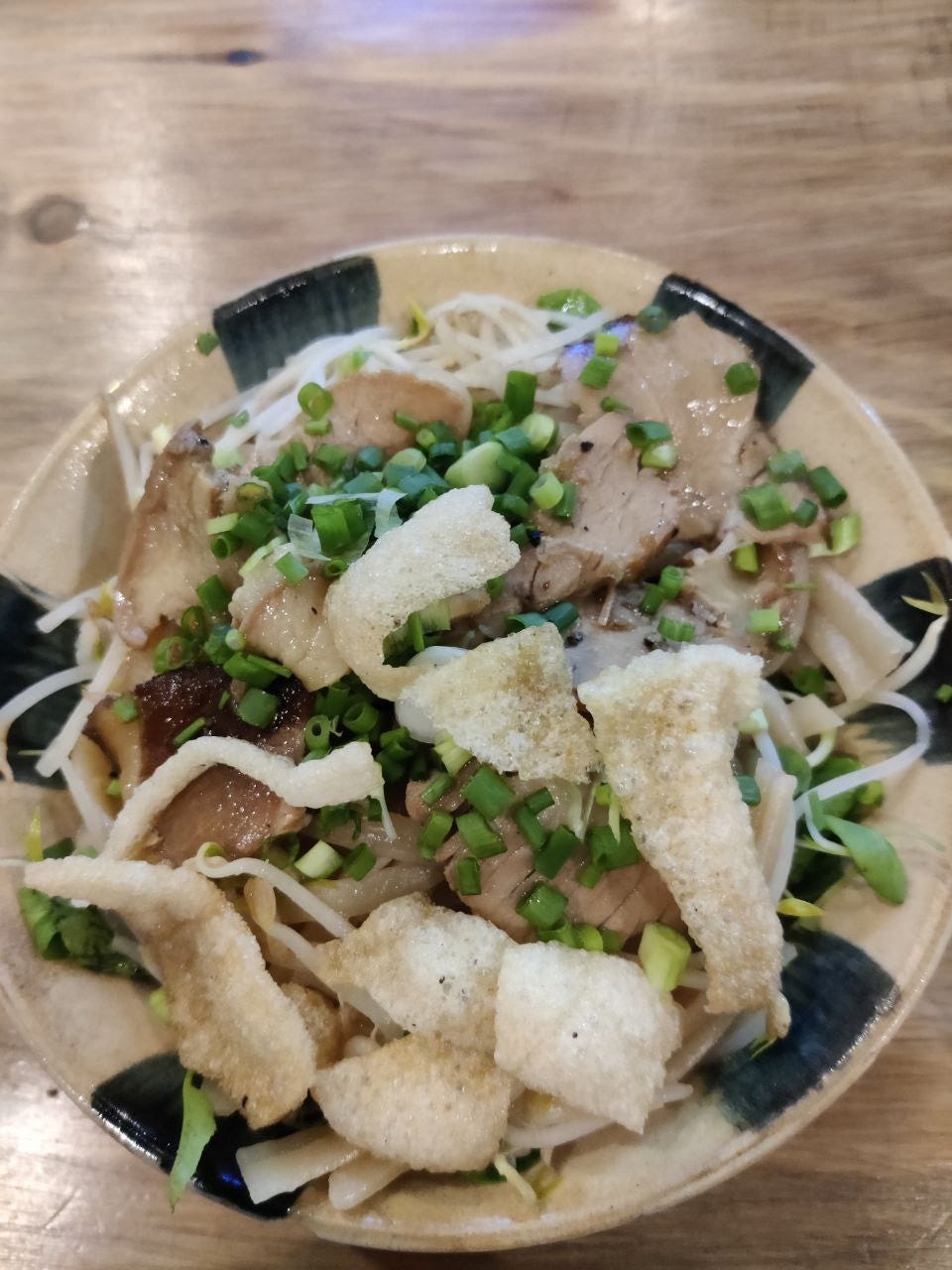
The gloom continued as we made our way up the Marble Mountains the next day. And thank god it was gloomy. The mountains are a group of five limestone peaks, each representing the five elements of metal, water, fire, wood and earth. The climb takes you through a maze of caves and pagodas that were built by the Mahayana Buddhists and the Ngyugen Dynasty kings. The caves are fascinating with numerous sculptures of the Buddha, Lady Buddha and other local deities.
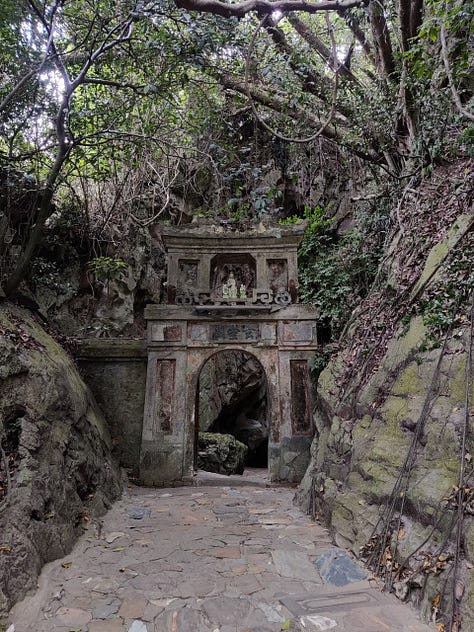
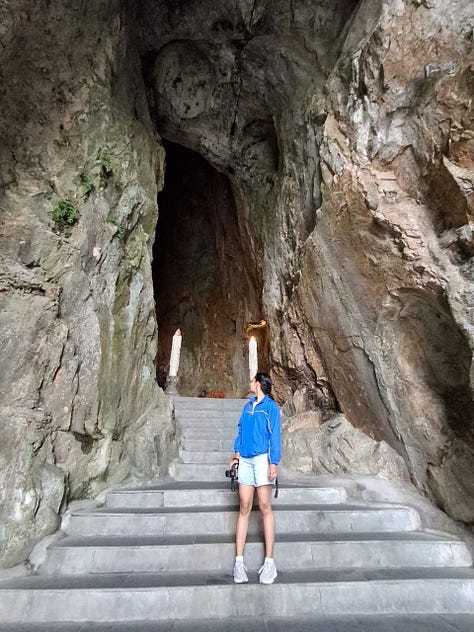
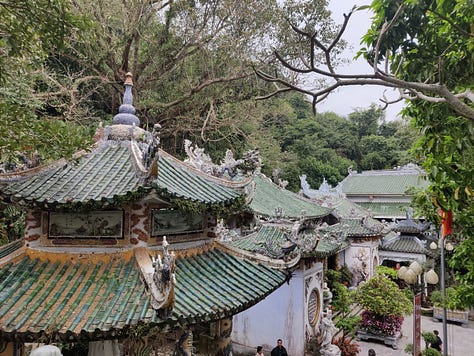

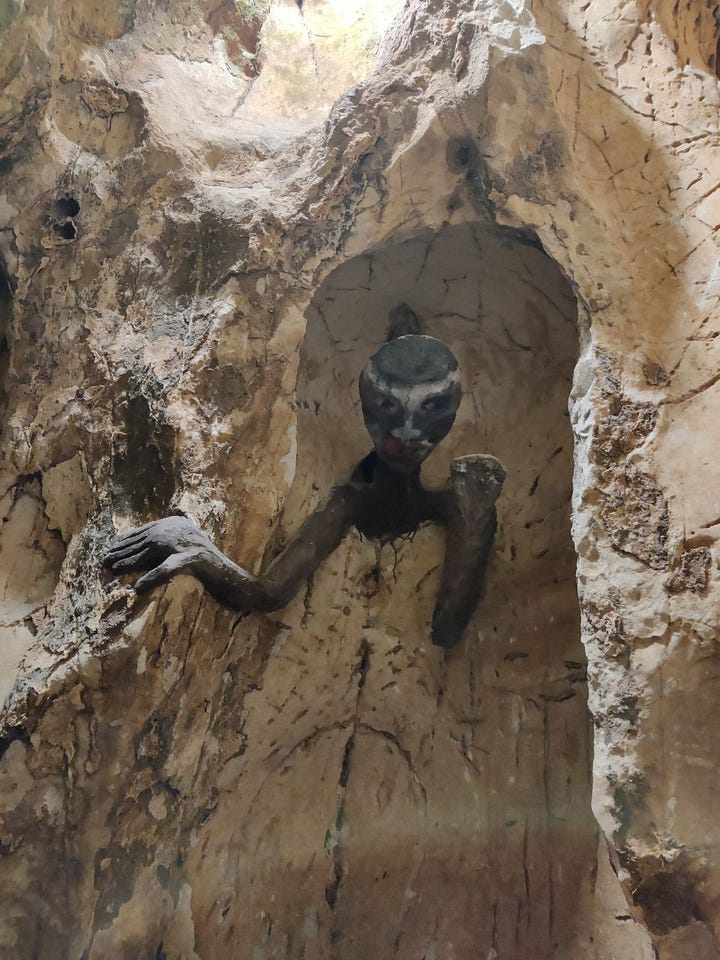
We finished early and headed off to picturesque Hoi An. Hoi An is a UNESCO World Heritage Site. The old French port displays lanterns by the hundreds as the sun sets. It is also where we saw the most number of tourists — crawling around relentlessly. As we strolled through the old city we were blessed with sunshine. Not a temporary glimpse but we saw the whole damn sun. We make a swift detour to a beautifully clear beach just 10 minutes away and zoned out while staring at the waves.
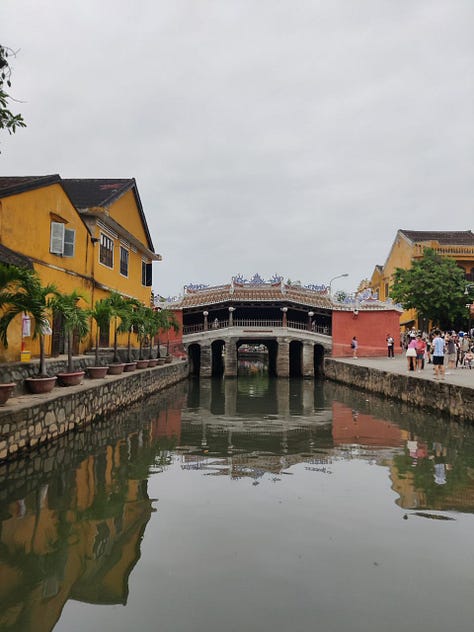
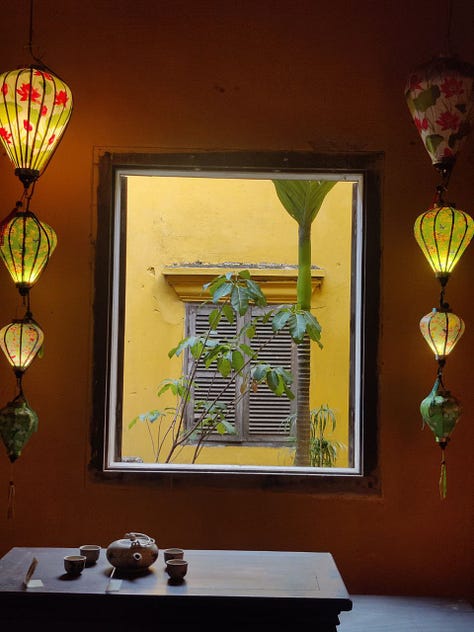
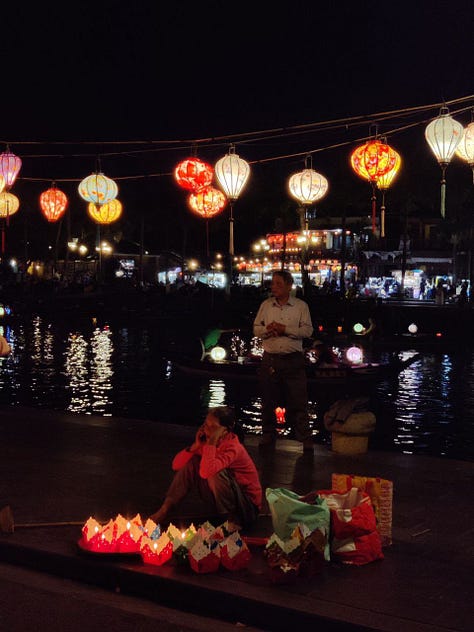
One Banh Mi and a coconut coffee later, we were on our way back to Da Nang. Next to our hotel was a seafood restaurant—the kind where you pick your seafood by weight and get it cooked to your liking. There were foreign tourists, locals and then us. Two small Indian girls trying to get our seafood hotpot boiling. It took a while, but not as long as it took to eat. The broth was a tomato based one flavoured with pineapple, yes, pineapple. That hotpot haunts me till date. We ate for almost two hours continuously as tables and stomachs got filled and emptied.
On our third and last day in Da Nang we went back to falling in love with the Champa kings. My Son sanctuary, about an hours drive from Da Nang, is like a very mini version of Cambodia’s Agkor Wat. The ancient structures are surrounded by lush forests and high mountains. We expected to see more tourists than we did and were glad for it. We were gladder for the sun, who seemed to want to bless us two days in a row. And so, we did what we did in Hoi An, we ran to the beach.
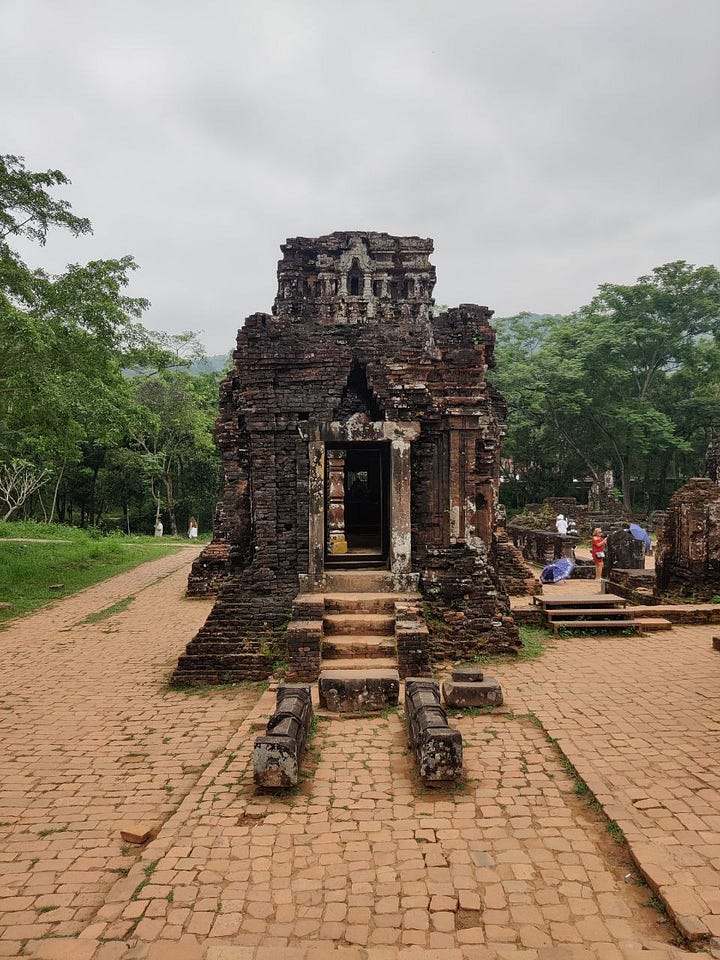
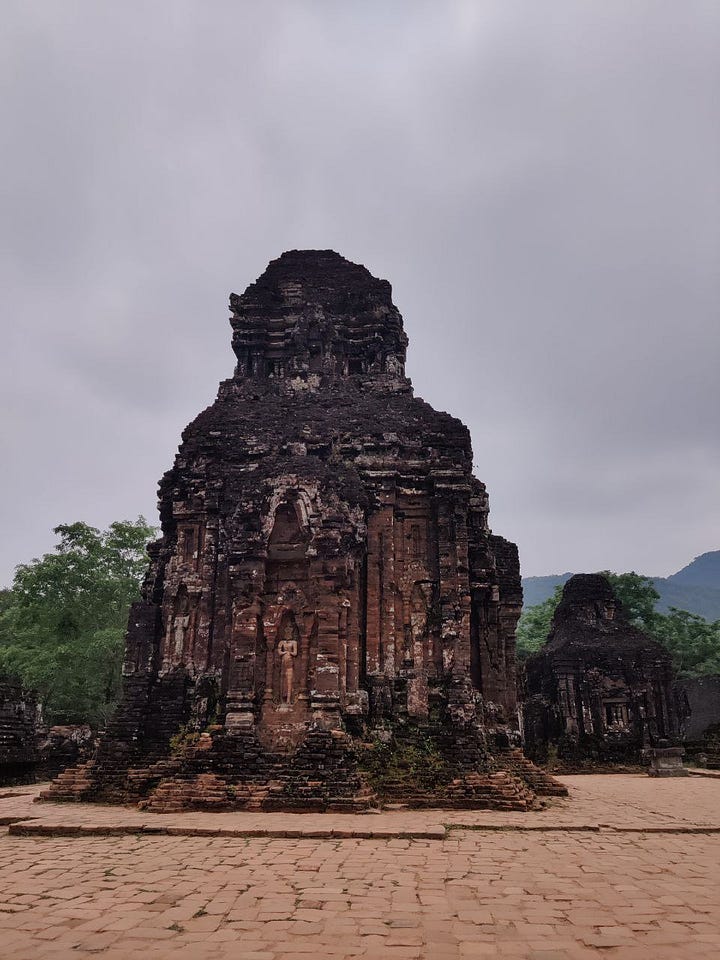
Da Nang is a popular tourist spot for South Koreans. Which was great for me as I got to test out my half-baked Korean skills acquired through intermittent lessons on Duolingo and continous consumption of K-Dramas. It is famous for its continous coastline where tourists flock to become one with the sea. However, owing to the gloomy weather, only a 50 metre stretch was open to bathing. As Vietnamese coast guards watched our every move, we did our quick ritual dip in the ocean and then planted our bottoms on the fine sand. There was no way we were going to push through the sea of tourists that were swimming. No way. It was our last day in Da Nang and we were halfway through our trip. We closed off this chapter with a visit to the Son Tra night market where hawkers selling all kinds of Vietnamese food filled our stomachs and senses. With great denial and sand in our suitcases we headed to the capital — Hanoi.
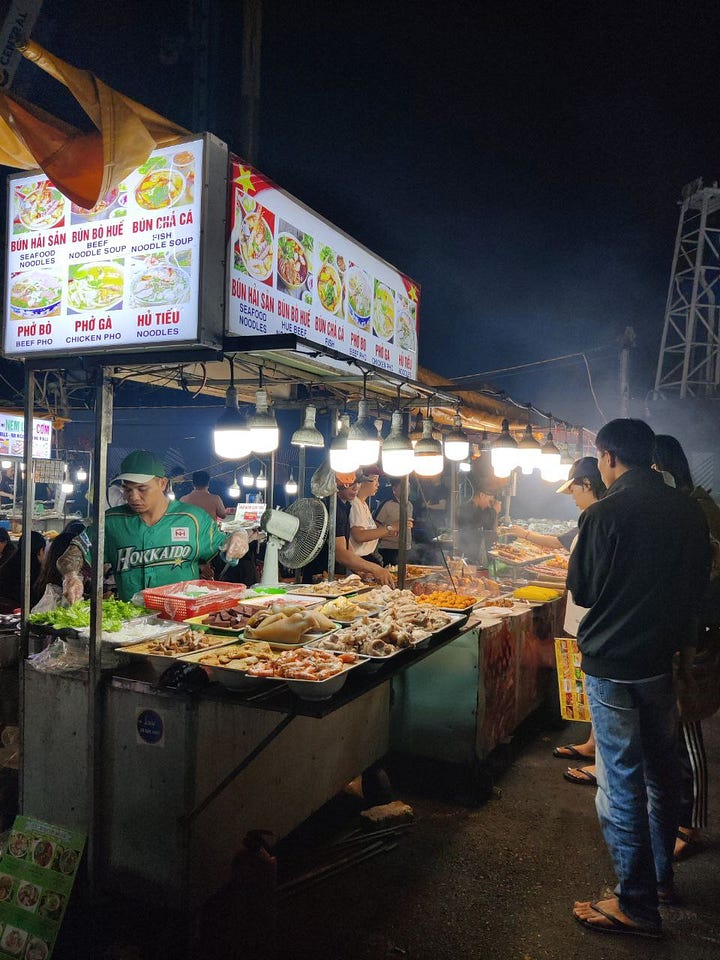
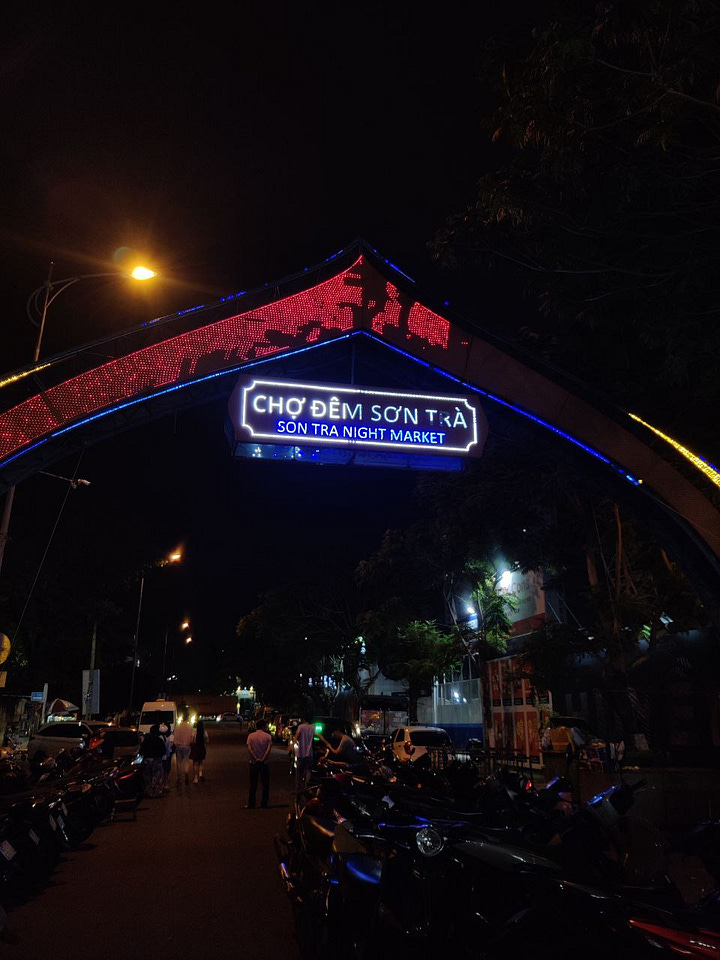

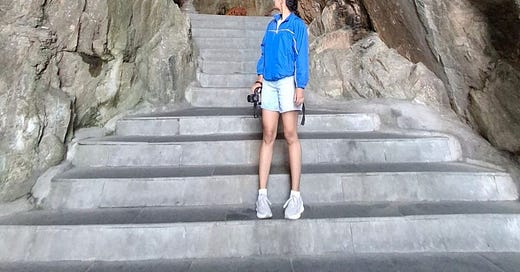



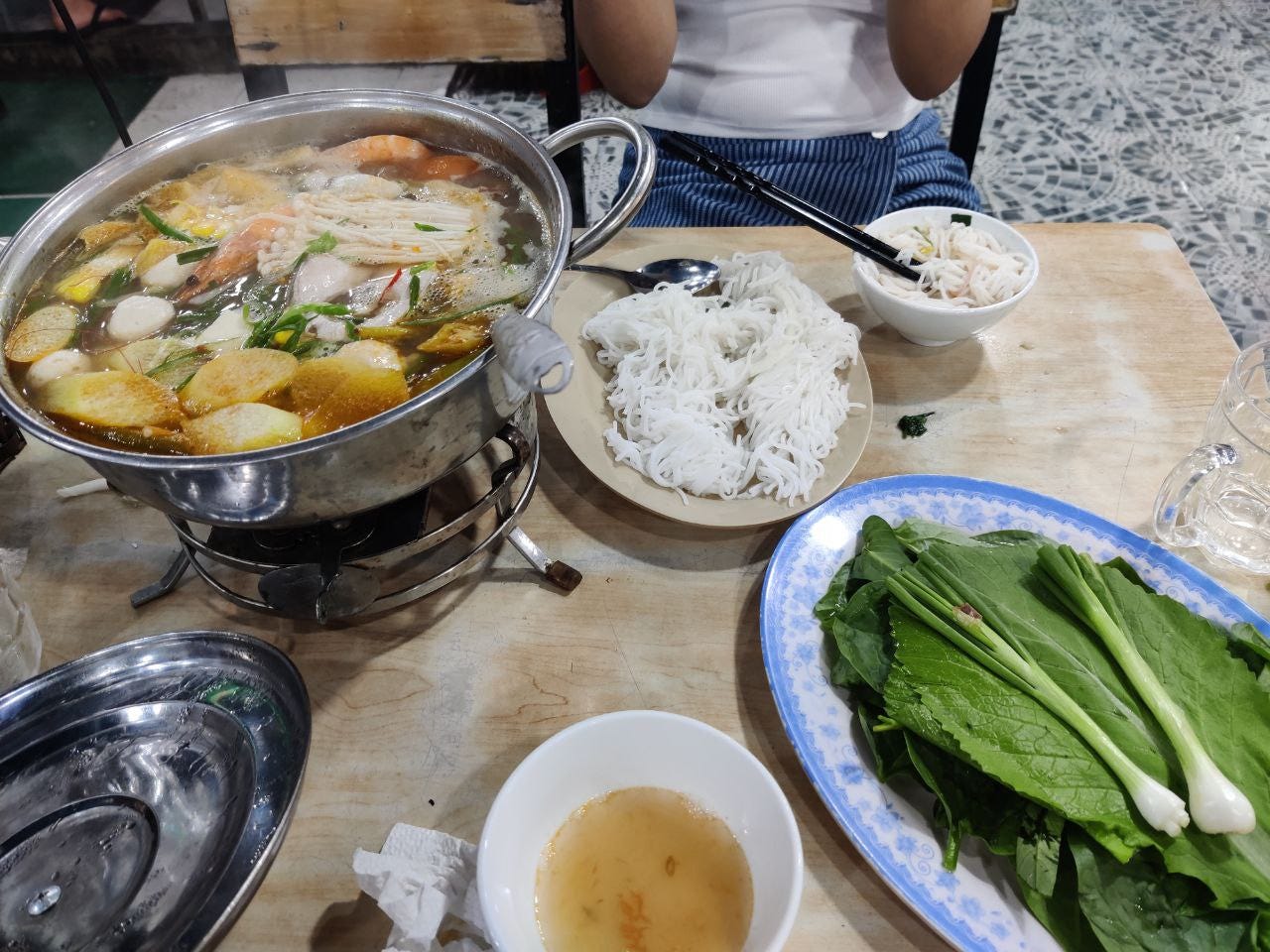
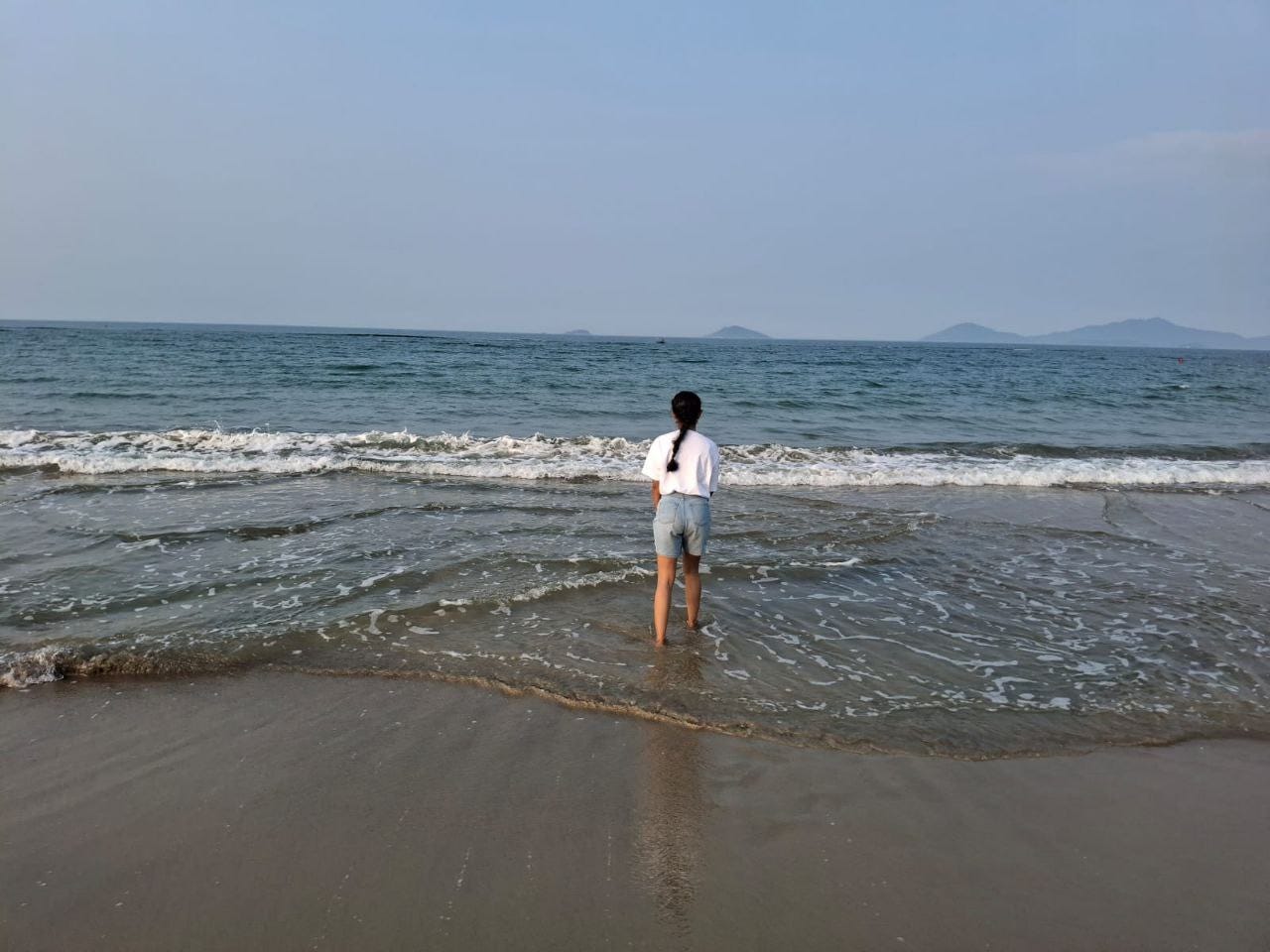
Inhaled this along with my morning chai! Enjoyedddd 💜
Ok, waiting for the Hanoi/North Vietnam post now. The sense of wonder with which you see things 🤩